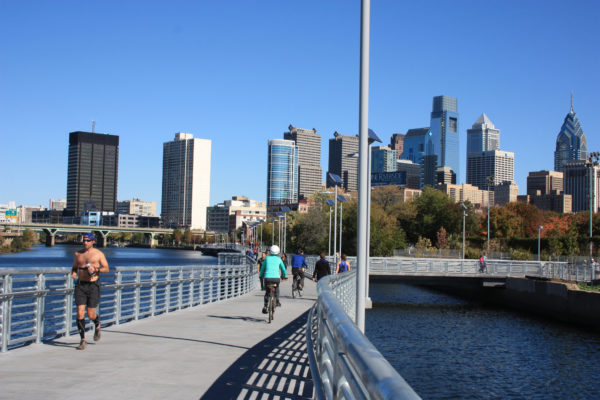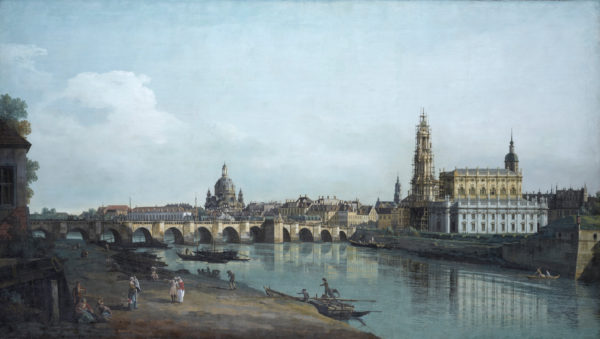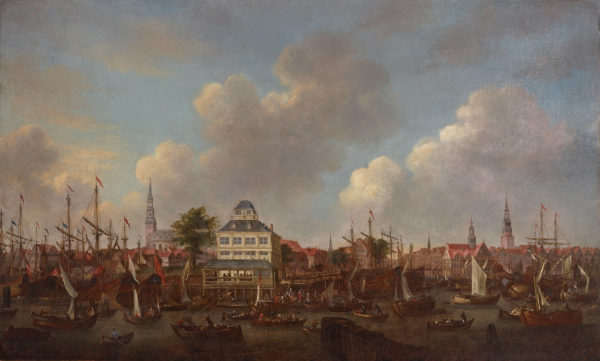These days, in Philadelphia, we’re loving our rivers. We’re strolling with our sweeties on Boathouse Row, swinging in hammocks under glow lights at Spruce Street Harbor Park and flocking to Twilight Yoga on Race Street Pier. The Schuylkill and the Delaware are becoming beloved local treasures and our best face to the world, thanks to fabulously successful renewal projects. When The New York Times made us #3 on their “52 Places to Go in 2015” list, it was with a spectacular photo of Schuylkill Banks.

What goes around comes around. In the 1700s, Northern European cities rediscovered their rivers too. While populations boomed and commerce flourished, cities embarked on ambitious building programs. In new city plans, those hard-working rivers that birthed them in medieval and Roman times became things of beauty and proud emblems of modern civic identity.
Gardens, cafes, performance halls and promenades popped up on riverbanks everywhere. Word spread and visitors started adding northern Europe to their tours, giving German admiring nicknames like “Little Paris” (Leipzig) and “Florence on the Elbe” (Dresden).
Both J. S. Bach and G. P. Telemann caught the wave. In River Music, Tempesta di Mare shares tributes by each master to their rivers. Bach’s cantata 206, Schleicht, spielende Wellen (Slink, playful ripples) and Telemann’s Hamburger Ebb und Flut (Ebb and Flood in Hamburg) in their own ways express the sense of optimism and promise that these rivers must have given their reborn communities.
Rivers for a Royal
Bach wrote cantata 206, Schleicht, spielende Wellen (Slink, Playful Ripples) as a mini-opera with four vocal soloists to honor Leipzig’s monarch, Augustus II, Elector of Saxony, on his birthday visit to the city in 1734. Tribute pieces exist to flatter the subject and Schleicht does so with a clever metonymic: it describes the Elector (who was also August III, King of Poland) through the voices the rivers associated with him—the Pleisse in Leipzig, Warsaw’s Vistula, Vienna’s Danube, and the river flowing through August’s ancestral home of Dresden, the Elbe.

Schleicht provides a graceful nod to the breadth of August’s influence. But by focusing on rivers, it must also have suggested to neighboring Leipzigers one of the Elector’s proudest strengths: urban renewal. Over the course of a generation, August III and his father, August “The Strong,” masterminded one of north Germany’s most splendid makeovers, transforming Dresden into a baroque-era fairyland. The Elbe River, beautifully framed by new buildings and the Augustus Bridge—just completed in 1731—was essential to the effect.
But Bach was clearly drawn to the concept for his own creative reasons, too. Schleicht seems inspired. It offers powerful characterizations of each river as a singular personality, from a war-ravaged bass Vistula to the peaceful soprano Pleisse—who shares her aria with a very fashionable trio of three flutes.
Alas! The Elector never got to hear it. When August arrived ahead of schedule, Bach switched Schleicht for another cantata, Preise dein Glücke, gesegnetes Sachsen (Value your good fortune, blessed Saxony), no. 215—beautiful, but no rivers. Schleicht got other chances for performance though, one in perhaps the perfect venue for the it: in summertime, outside, in a garden, with water in the background.
Bringing the River Inside
A free imperial city of the Holy Roman Empire, Hamburg had no royalty. One of the things G. P. Telemann loved about his position as city music director was how music wasn’t limited to court; rather, excitement about music ran all through Hamburg’s society. He wrote to a friend:
I don’t know if you can find anyplace anywhere that’s as stimulating to musicians as Hamburg. One big reason is that many of the prominent people, the city leaders, even the entire city Council, follow people in the know and come to public concerts.*
True to form, the audience for his overture-suite Hamburger Ebb and Flut’s (Ebb and Flow in Hamburg) first performance, in 1723, included a Who’s Who of civic leaders, including the burgomaster, councilors, merchants and sea captains. It was written for a banquet celebrating the jubilee centennial of Hamburg’s College of Admiralty, which oversaw many aspects of operating Hamburg’s enormous natural harbor—even today, one of the world’s biggest and busiest—on the Elbe River adjoining the North Sea.

The performance was held literally at river’s edge in the Baumhalle, an enormous, multi-story building with balconies, windows and even a cupola giving a full view of the harbor. All of which sights and sounds Telemann used for his overture-suite Hamburger Ebb und Flut. It was probably intended as a show opener, a sort of amuse-bouche before the more serious musical fare later in the program, which included an evening-long Telemann oratorio (Admiralitätsmusik, TWV 24:1).
But Ebb und Flut stands on its own terms, as light and effervescent as sea foam. Its Naiads gambol. A Nereid snores. A formal French overture is punctuated by waves. And its gigue—jig—movement describes the Elbe’s tides rising and falling, rising and falling. You can imagine the composer keeping an ear cocked as he went about his daily errands, noting the sounds of ripples and splashes and thinking of ways of working them into music.
And you can imagine the delight of the audience gathered around the banquet as they took in this witty, affectionate tribute to the natural miracle they owed their comfortable lives and livelihoods. Ebb and Flut has gone on to become one of Telemann’s most popular orchestral works, both in his lifetime and today.
______________________________
Anne Schuster Hunter is a writer and art historian in Philadelphia who leads a creative writing workshop at Temple University Center City. www.anneschusterhunter.com
* Letter from Telemann to Johann Friedrich Armand von Uffenbach, July 31, 1723. Georg Philipp Telemann, Briefwechsel, Sämtliche erreichbare Briefe von und an Telemann, ed. Hans Grosse and Hans Rudolf Jung, Leipzig, 1972. Translation by author. (resume article)
